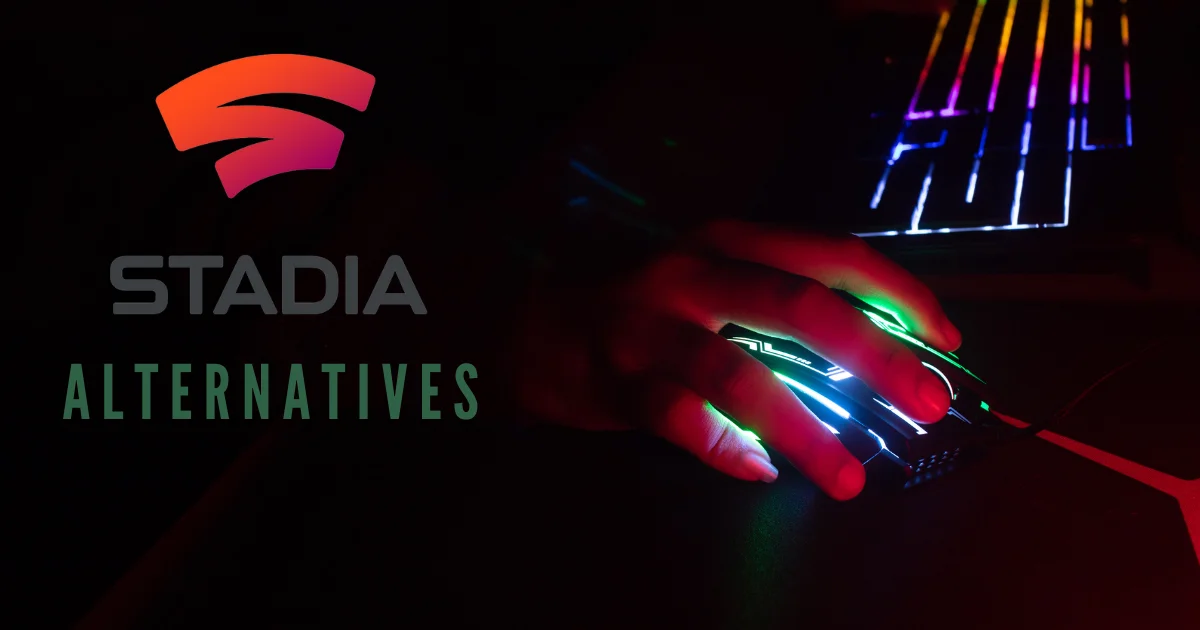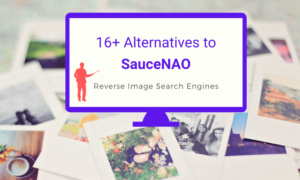Launched on November 19, 2019, after a few years of operation, Google is shutting down its cloud gaming service Stadia. The company announced the news in a blog post on Tuesday, revealing that Stadia will go offline on January 18, 2023. So, today we’re going to review the ten best alternatives to Google Stadia.
While compiling this list, we made our best effort to keep the choices unique so that you’ll find the best gaming service that works best for you. But first, you should know a few important things that make your final decision easy.
Over the last several years, the advances made in the gaming industry have been extraordinary, offering the ability to stream games on nearly any device you own. While the concept of streaming games is nothing new, the strategies different companies employ to simplify this process can vary drastically, offering their own set of pros and cons.
One of the younger and more popular choices, Google Stadia, has had its fair share of ups and downs in the market. Stadia offers both – a free tier and a $10/month tier. While the free version allows you standard access for games you purchase at 1080p while their Pro edition offers 4k resolution, 5.1 surround sound, exclusive discounts, and the occasional free game.
Unfortunately, Stadia has a long history of issues. While it’s great when working at full capacity, its massive bandwidth requirements (up to 15GB an hour!) cause it to bog down your machine and give you the problems that PCs and Consoles don’t usually face.
Explore the Best 10 Google Stadia Alternatives in 2025 for Cloud Gaming Across PCs, Macs, iOS, Android, and TVs:
1. NVIDIA GeForce Now
The first choice on our list of Stadia Alternatives is NVIDIA’s GeForce Now, a service that just came out of beta recently and focuses primarily on streaming. While other services on this list offer game library access, NVIDIA’s sole focus is allowing you to play games on non-gaming devices that you already own, such as:
- macOS Devices
- PC Devices
- Android Devices
- NVIDIA Shield TV
Of course, the device’s quality will impact your ability to stream games from GeForce Now, which applies to every service on this list.

GeForce Now offers two plans; a Free Tier and a Founder’s Membership for $4.99/month. The free plan will allow you to play up to 1080p60 resolution streaming in one-hour sessions. However, the Founder’s edition allows for up to six hours of gaming with RTX Ray Tracing enabled.
To get the most out of GeForce Now, you’ll need robust internet bandwidth and speed. For 720p60 resolution streaming, you’ll need a minimum of 15mbps connection, while 1080p60 requires 25mbps. I recommend using either a wired connection or 5G Wi-Fi.
This Google Stadia alternative is best suited for those who already have a collection of games they want to stream using other devices.
2. Steam Link
Steam Link, released in 2018, is the best alternative to Google Stadia. This game streaming service is all about bringing your Steam library to any of your devices, including TVs, streaming you’re your hosting desktop.
Unlike the other options on this list of Google Stadia alternatives, Steam Link is not a cloud-based service and uses your components and games with the functionality to “cast” them to other devices.
With the way it’s set up, you’ll need to first enable Steam’s streaming feature on the hosting desktop. From here, you would connect a Bluetooth controller and then launch the app from your desired device. Both the hosting desktop and gaming devices need to be on the same network for this to work.
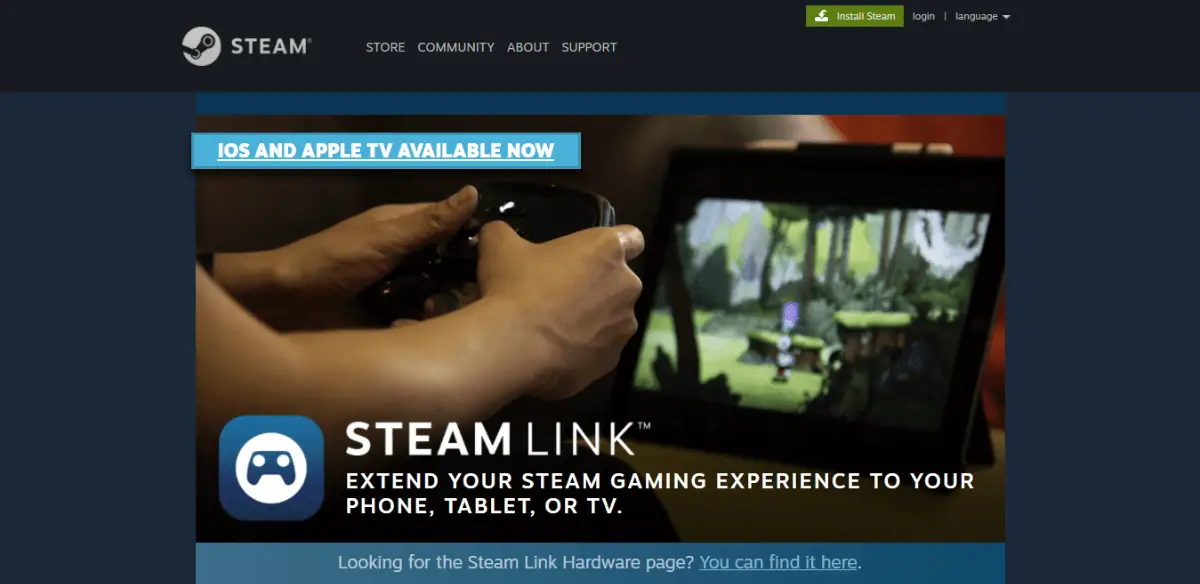
Just like with GeForce, you’ll want to use either a wired connection or 5G Wi-Fi on your hosting device. Fortunately, latency is hardly an issue due to their low bandwidth requirements within the same network, so the gaming experience should be smooth.
Unlike Cloud streaming, your desktop specs play a massive role as your hosting device is still running the game. It means a strong CPU & GPU is essential if you want the best gaming experience.
In terms of pricing, Steam Link is entirely free. The games you play come off of your library, and the performance specs, as we just mentioned, come off your hosting device.
3. Amazon Luna
Amazon Luna emerges as a formidable alternative to Google Stadia, combining advanced technical capabilities and a versatile subscription model. With Luna, you can stream games at up to 4K resolution for visually stunning clarity, supported by a smooth frame rate of up to 60 FPS, ensuring responsive gameplay that is crucial for action-packed titles.
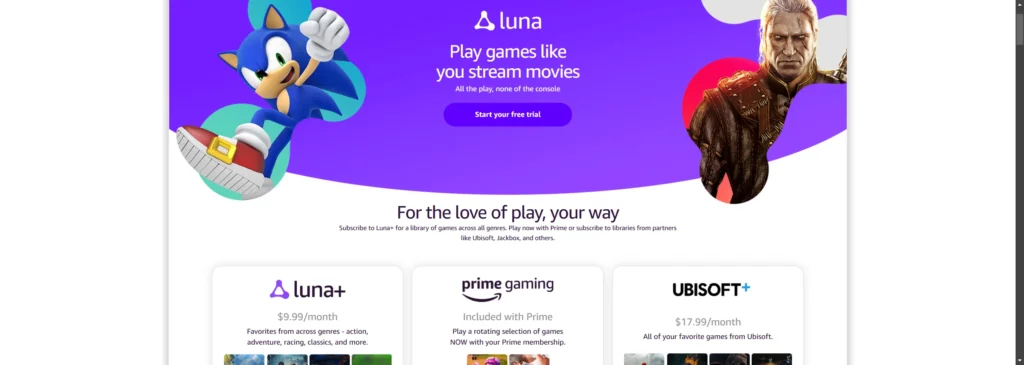
Luna’s library includes a broad range of games that appeal to various interests and ages. For instance, you can explore vast open worlds in “Far Cry 2” or “Fallout: New Vegas Ultimate Edition,” dive into high-speed adventures with “HOT WHEELS UNLEASHED™ 2 – Turbocharged,” or immerse yourself in the Star Wars universe with “Star Wars Outlaws.” These titles exemplify Luna’s commitment to providing diverse and engaging gaming experiences.
Luna offers a unique type of membership through “Channels” instead of traditional tiers. These channels allow publishers to manage their streaming content. The first preview we’ve seen features partners like Jackbox Games, Luna, Ubisoft, and Prime Gaming, with pricing ranging from $4.99 to $17.99. I expect this model to become popular with various game publishers.
Amazon also owns Twitch. It means we’ll get to pull out our favorite gaming microphone and broadcast our gameplay with extreme ease between Luna & Twitch.
Since Amazon Luna officially launched in the U.S. on March 1, 2022, and expanded to the UK, Germany, and Canada just over a year later on March 22, 2023, the platform is still evolving. While we don’t yet have all the details on the service, Amazon’s established presence in the streaming space makes us eager to see how Luna continues to develop and what exciting features lie ahead.
Overall, Luna’s integration of high-resolution streaming, a diverse game catalog, and competitive pricing, coupled with the convenience of cloud gaming, positions it as a top contender for those seeking a comprehensive and accessible cloud gaming service.
4. Xbox Cloud Gaming (Beta)
Exploring alternatives to Google Stadia, I’ve found Xbox Cloud Gaming to be a solid choice, nestled within Microsoft’s Xbox Game Pass Ultimate. This feature enables you to stream numerous Xbox console games directly onto a variety of existing devices like smartphones, tablets, and PCs.
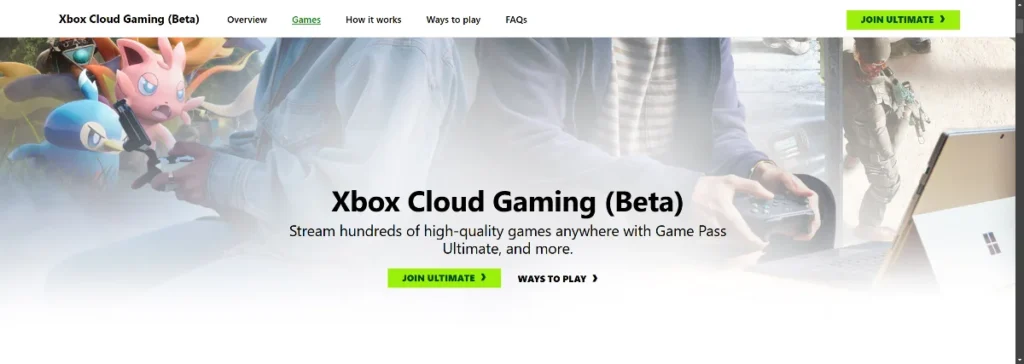
For those who value flexibility in their gaming experience, Xbox Cloud Gaming is especially appealing. It supports a range of controllers, including the Xbox Wireless Controllers and Sony DualShock 4. Additionally, certain games are playable with just touch controls, making it exceptionally convenient if you prefer not to be tethered to traditional gaming hardware.
One of the standout features of Xbox Cloud Gaming is its cloud streaming capability, eliminating the need for extensive local storage and lengthy downloads. Regular updates to the game library and the ability to stream at resolutions up to 4K ensure a consistently fresh and high-quality gaming experience.
The subscription to Xbox Game Pass Ultimate, which includes Xbox Cloud Gaming, is priced at $14.99 per month. This package not only offers comprehensive access to a vast gaming library but also integrates EA Play, providing even more gaming content at no additional cost.
To optimize your experience, a strong internet connection is recommended to facilitate smooth gameplay and minimal lag. This service is ideal if you’re looking for premium gaming experiences both at home and on the move, without the upfront cost of expensive gaming hardware.
5. PlayStation Plus
PlayStation Plus is one of the more stable options on this list of Google Stadia alternatives, and that’s largely in part due to the device restrictions. While cloud gaming services on this list allow you to play on (almost) every device, PlayStation Plus is exclusive to PS4 (and presumably PS5) & PC.
However, PlayStation Plus is a little older but works incredibly well, though performance will depend on your specifications if using a PC.

While it used to cost roughly $20/month for their service, PS Now comes in at $10/month with discounted options if you buy in bulk. It was the first streaming service I ever used, as I previously played on the PS4. While the price was less than preferable, I was always happy with their offered library.
Now in 2025, the price has gone down, and the quality has gone up. The regular rotation of Triple-A titles with the familiar old gems is sure to keep any gamer entertained for a long time.
If you’re happy with your gaming device and are only looking for a library streaming service, PlayStation Plus may be right for you.
6. Shadow
If you’re on the lookout for a versatile alternative to Google Stadia, Shadow might just be what you need. Shadow turns any device you own into a fully operational Windows gaming PC, allowing you to access high-end gaming and software applications remotely.
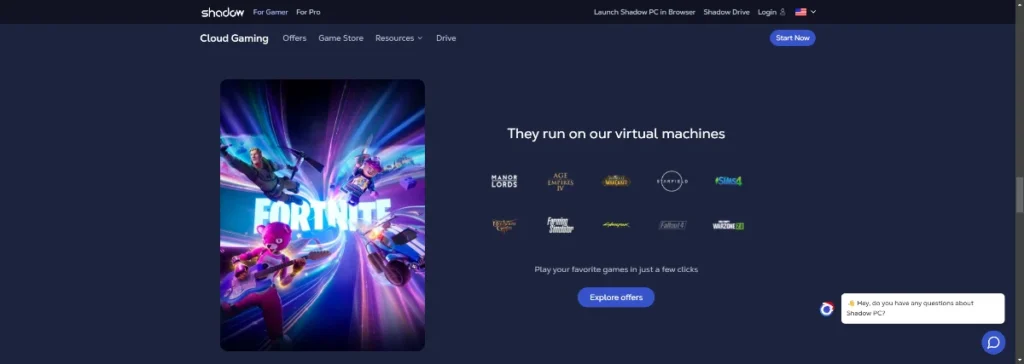
With Shadow, you’re not just getting a gaming platform; you’re accessing a comprehensive Windows PC remotely. This means you can dive into the latest gaming titles or tackle intensive software applications from anywhere, using devices as simple as your tablet or a friend’s TV.
The pricing for Shadow starts with a Boost Offer at $19.99 for the first month, transitioning to $29.99 per month thereafter, without any commitment. For more demanding users, the Power Offer provides advanced capabilities for $49.98 per month, catering to those who need extra performance for more intensive tasks.
I find Shadow particularly appealing because it offers more than gaming; it delivers a full PC experience in the cloud. This service is perfect for you if you seek the flexibility to play advanced games and use powerful applications without the need to invest in high-end hardware. Whether you’re a casual gamer or a passionate tech enthusiast, Shadow provides the tools to elevate your digital experience wherever you go.
7. Parsec
As someone always on the lookout for flexible gaming and professional solutions, I’ve found Parsec to be a standout alternative to Google Stadia. It allows you to connect to your PC from anywhere, effectively turning any device you have into a powerful workstation or gaming setup with just an internet connection.
For your personal use, Parsec offers the Warp plan at $8.33 per month, billed annually. This plan enhances your experience with features like multi-monitor displays and improved color accuracy, which I find essential for detailed work or immersive gaming.
If you’re part of a team, the team plan at $30 per user/month, billed annually, includes everything from the individual plan plus added security features like single sign-on and audit logs—great for managing larger groups securely. For enterprise-level needs, Parsec provides tailored solutions, which you can discuss directly with their sales team to ensure it fits your organization’s specific requirements.
Parsec really shines with its ability to stream at 60 FPS and UHD resolution, ensuring a smooth and responsive experience whether you’re gaming or collaborating on complex projects. I appreciate how it supports collaborative work across distances, offering tools for screen sharing and peripheral integration, making remote teamwork seamless and efficient.
For anyone who needs a reliable, high-quality remote access solution that goes beyond traditional gaming, offering flexibility and performance, I recommend checking out Parsec. It’s a powerful tool for both gamers and professionals needing access to their systems from anywhere.
8. Blacknut
If you’re in search of a solid Google Stadia alternative, you might want to consider Blacknut. From my experience, Blacknut offers a seamless gaming transition from one device to another, which means you can start your game on a large-screen TV and continue on your smartphone without any interruptions. This flexibility ensures that you can enjoy your favorite games whenever and wherever you prefer.
The pricing model of Blacknut is particularly appealing if you’re budget-conscious. For new subscribers, there’s a 50% discount for the first six months, making it only $9.99 per month during this period. This offer provides a cost-effective way for you to dive into a diverse library of over 500 games without a hefty initial investment.
What I appreciate most about Blacknut is its user-friendly approach. The platform supports up to five player profiles and can sync four controllers simultaneously, making it an excellent option for family game nights or playing co-operatively with friends. Plus, the inclusion of parental controls helps ensure that the content is appropriate for all ages.
Overall, Blacknut stands out as a flexible, affordable, and user-centric platform, making it a great choice if you’re looking for an alternative to Google Stadia with a rich selection of accessible games.
9. Moonlight
If you’re looking for an open-source alternative to Google Stadia that lets you play your PC games virtually anywhere, Moonlight might be exactly what you need. I’ve found it incredibly useful for streaming games from my PC to almost any device, whether I’m just in another room or miles away.
Moonlight really shines with its compatibility. You can stream games to devices as varied as Android phones, iPhones, Apple TV, PCs, Macs, Chromebooks, and even gaming consoles like the Nintendo Switch and PlayStation Vita through homebrew applications. This wide range of supported devices makes Moonlight a highly flexible option for gaming on the go.
One of the aspects you’ll appreciate most about Moonlight is its ability to stream at up to 4K resolution with HDR support, and even at 120 FPS if your network can handle it. This ensures that you get the best visual quality and smoothest performance, rivaling what you’d expect from more commercial services like Stadia.
Moonlight gives you the freedom to run your own cloud gaming server. This means you can set up everything just the way you like it on your gaming PC and stream those settings and games directly. Whether you’re using residential ISPs and port forwarding, or software-defined networks like ZeroTier, Tailscale, or NordVPN Meshnet, you’re in control.
What sets Moonlight apart for me is that it’s completely free. There are no ads, bundled services, or premium versions. Being a community-run project, it relies on contributions from users and developers, which helps keep it transparent and focused on delivering a great streaming experience without commercial pressures.
Getting started with Moonlight is straightforward. Download the client for your device, set up your PC as a host using NVIDIA’s GameStream protocol, and you’re ready to start streaming your game library. Check out Moonlight’s setup guide to get everything running smoothly.
10. Boosteroid
If you’re exploring alternatives to Google Stadia, Boosteroid presents itself as a compelling option. This cloud gaming platform allows you to play your PC games on virtually any device without the need for downloads, making gaming accessible wherever you are.
Boosteroid shines with its ease of access. You can play games directly in your browser, which eliminates the hassle of downloads and updates. This is particularly advantageous if you’re using devices with limited storage or processing power. The platform supports a variety of devices including PCs, Macs, Linux machines, and even smart TVs and mobile devices, ensuring you can game on your preferred device without limitations.
Boosteroid offers an attractive pricing model, starting from €7.49 per month with an annual subscription. This makes it a budget-friendly choice, especially if you’re looking to access high-end gaming experiences without investing in expensive hardware.
A feature that stands out is the ability to start a game on one device and continue on another. This flexibility ensures that your gaming sessions are not disrupted when you switch devices. Additionally, Boosteroid provides robust customer support with online chat, promising responses within 1-2 minutes, which enhances your gaming experience by ensuring help is readily available whenever needed.
Boosteroid also allows you to stream your gameplay directly to platforms like YouTube, which is a great feature if you’re into sharing your gaming sessions or building a viewership. The platform promises no session time limits, which means you can game as long as you like without interruptions.
For gamers who need a versatile, easy-to-access, and affordable cloud gaming service, Boosteroid offers a solid package that’s worth considering as an alternative to Google Stadia. It combines the convenience of cloud gaming with the capability of high-quality streaming and multi-device compatibility, making it an appealing choice for casual and hardcore gamers alike.
Can These Cloud Gaming Services Remove the Need for a Gaming Machine?
It was the very first question that I thought about when discussing cloud gaming. Services like Google Stadia market themselves as replacements for those $2500+ gaming rigs you see on YouTube, but the reality is, that’s a long time away from happening if it ever will.
Right off the bat, I can tell you that there are limits on these services that are less than preferable. One of the biggest motivators for me to switch from console to PC was the control I would have; I would define my limits by custom-tuning my machine.
There’s also something special about building your PC that I can’t see these services being able to replace.
Can You Stream Games while Recording a Video Stream?
One of the more popular questions we’ve heard about these services, a lot of people want to stream their gameplay on services like Twitch without lag. It is doable and even encouraged by some companies like Google (with YouTube Gaming and Stadia) and the upcoming Amazon Luna with Twitch.
To maximize your streaming quality, you’ll want to use a quality microphone that doesn’t lag behind your video. Some of the best USB microphones are built with zero-latency monitoring for seamless streaming experiences. The evolution of these microphones has a massive impact on the gaming community, with some mics offering mixing software specifically for streaming.
While the right microphone can offer zero latency, finding the best microphone for your computer, tablet, or handheld device can make a massive difference in your communication and streaming quality by giving your voice studio sound for an affordable price.
In terms of bandwidth and latency impacts, it will require more from your ISP if doing a live stream, especially if sharing the same device, but overall, it’s very doable and practical.
Updated List of Cloud Gaming Services: Recent Closures and Changes
- The Gaming Project: Temporarily suspended services as of September 12, 2023, making it unavailable for cloud gaming options.
- PlayStation Now (PS NOW): Integrated into PlayStation Plus Premium in 2022, ending its standalone service.
- Vortex.gg: Closed down permanently on February 28, 2022.
Due to these significant changes, these services should no longer be counted as viable Stadia alternatives in 2025.
Conclusion
As you can tell, there’s no shortage of options for video game streaming. For some, this may be intimidating, as the features can vary drastically based on which service you choose. Fortunately, many of Google Stadia alternatives offer free tiers or trials, allowing you to find the best fit & confirm your equipment is in good shape to play.
Google Stadia has come a long way since its initial launch, which was nothing short of disastrous. Whenever it’s working at full capacity, we’ve found it to be advantageous. However, with the Google Stadia alternatives, on the market, it’s still worth experimenting with because they all have their host of pros and cons.
For all we know, when Amazon Luna launches, they might outperform all their competitors, but for now, you have your choices, and it’s up to you to decide which Google Stadia alternative is best for you.
Do you have any thoughts about the services on the Google Stadia alternatives list? Did you find one that you love? Let us know in the comments. We’d love to hear your feedback!
Adrian Higgins is the founder and primary creator of Musician Nerd, Vanity Compare & Gaming Notion, and is deeply passionate about music, gaming, and technology.

